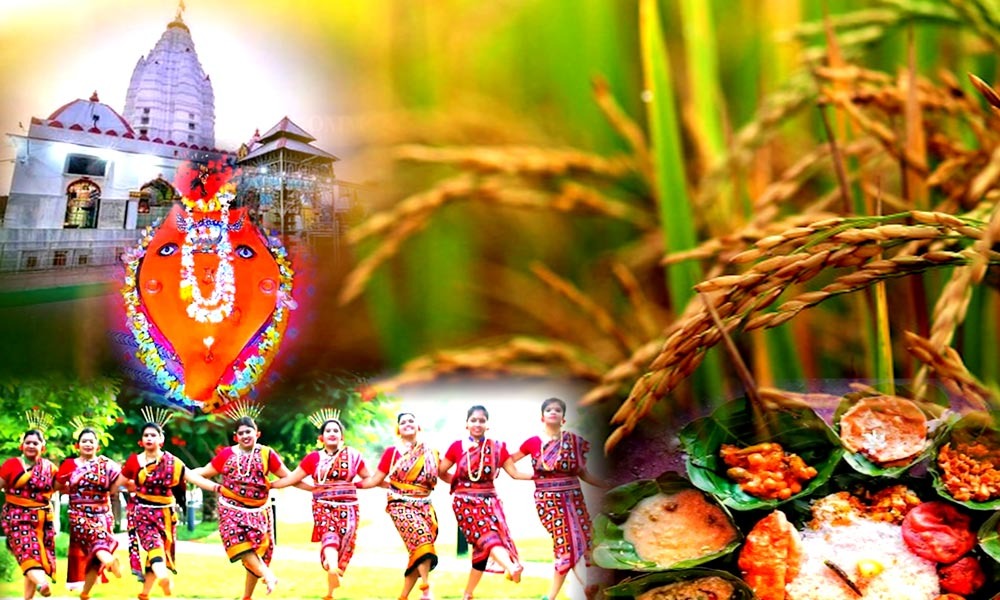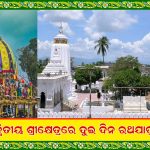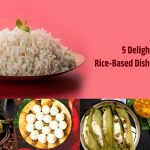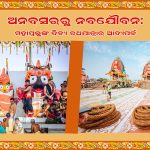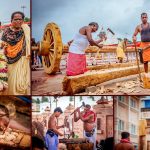A saying goes, “What you sow, so shall you reap.” The happiness that follows, when we see seeds growing into tall trees, can never be measured or spoken of merely in words. Nuakhai is an Odisha harvest festival that celebrates the joy of watching crops mature and expressing gratitude to nature for the same.
Celebrating Togetherness
“Nua” means “new” and “khai” means “food. The festival celebrates the arrival of new crops. It signifies welcoming newness into life, with new hopes and new beginnings. As much joy as the festival brings to the farmers, it also fosters togetherness among everyone. People on this day gather, leaving behind qualms and making merry together. Celebrated on the day after Ganesh Chaturthi, it is marked by the exchange of gifts among the family members. It is celebrated with a lot of enthusiasm in the western parts of Odisha.
We all lead a busy lifestyle, where we are hardly able to spare any time for ourselves, or even for those who are very close to us. This is the occasion that brings everyone together, with everyone gathering at their ancestral house for celebrations.
As we all know, the agricultural communities are our backbone. They provide us with our lifeline, food, by toiling for long periods in the fields. The celebration also promotes the importance of agriculture to our existence.
Prior Preparations
The preparations usually begin 15 days prior to the main festival. There are nine important rituals that have to be followed till the main festival.
The first ritual is Beheren, when the elderly gather at a holy place after the trumpet is blown, to call the people out. Then follows Lagna Dekha. A final date and time is fixed for the celebrations by the elders. Discussion then takes place with the purohis regarding this. A proper Mahurat is fixed for the celebrations to be carried out.
Daka-Haka, a formal invitation is sent to people to be a part of the festival. Then the selling and purchasing of the grains takes place which is known as Kina-Bika.
Then comes Safa-Sutra and lipa-puchha, which take place a few days before the festival, in which the people in every household dedicate themselves to cleaning and mopping the entire house. They further decorate the house with jhottis and chittas, artistically made on the walls. It’s not just about the aesthetic aspect of the jhottis but also a strong belief that they bring about positivity in our lives. After having completed early morning baths, women put on jhottis with enthusiasm, sitting on wooden stools or even on the ground.
The villagers then set out to the fields to find a new crop. This custom is called Dhana Khoja (in which “Dhana” means crop and “Khoja” means search).
Main Celebrations
The day of the Nuakhai celebrations finally arrives, when we witness joy and happiness at their peak. Women are traditionally draped in ethnic Sambalpuri sarees and their odhonas. Harvested rice is worshipped and offered to the deities. The celebrations take place majorly in the western part of Odisha, each region having its own Goddesses to worship. For instance, there is Manikeshwari Devi in Kalahandi, Pataneshwari Devi in the Balangir-Patnagarh area, etc.
Excitement becomes double during Juhar Bheta, when relatives meet and exchange gifts, seeking their blessings.
The household celebrations are carried out in a very simple manner, usually performed by the eldest family member. First of all, customary duties are performed, followed by the distribution of newly harvested rice among the rest of the family members. It is then followed by Nuakhai Juhara, when youngsters touch the feet of their elders and seek their blessings.
Happiness All Around
No festival can ever be called complete without some melody and rhythm added to it. Music and dance add a fun feel to the festivals. Odisha’s tribal dances and music have a unique charm. Local communities organise functions comprising graceful Sambalpuri dance forms like Rasarkelu, Dalkhai, Chuta, etc.
Fun becomes fourfold when Aresa Pitha is served in huge quantities. Every Odia’s favourite, the sweet pithas, are the centre of attraction during every festive occasion in the state. Savouring these delectable dishes while chatting with close family members is an unforgettable experience that we all long for. The ladies of the houses are seen preparing several other desserts, and the kids delightfully eat them.
On this festival of happiness and positivity, we wish you to harvest good luck and positivity in life and have a great year ahead full of hope and joy. Nuakhai Juhar!
A saying goes, “What you sow, so shall you reap.” The happiness that follows, when we see seeds growing into tall trees, can never be measured or spoken of merely in words. Nuakhai is an Odisha harvest festival that celebrates the joy of watching crops mature and expressing gratitude to nature for the same.
Celebrating Togetherness
“Nua” means “new” and “khai” means “food. The festival celebrates the arrival of new crops. It signifies welcoming newness into life, with new hopes and new beginnings. As much joy as the festival brings to the farmers, it also fosters togetherness among everyone. People on this day gather, leaving behind qualms and making merry together. Celebrated on the day after Ganesh Chaturthi, it is marked by the exchange of gifts among the family members. It is celebrated with a lot of enthusiasm in the western parts of Odisha.
We all lead a busy lifestyle, where we are hardly able to spare any time for ourselves, or even for those who are very close to us. This is the occasion that brings everyone together, with everyone gathering at their ancestral house for celebrations.
As we all know, the agricultural communities are our backbone. They provide us with our lifeline, food, by toiling for long periods in the fields. The celebration also promotes the importance of agriculture to our existence.
Prior Preparations
The preparations usually begin 15 days prior to the main festival. There are nine important rituals that have to be followed till the main festival.
The first ritual is Beheren, when the elderly gather at a holy place after the trumpet is blown, to call the people out. Then follows Lagna Dekha. A final date and time is fixed for the celebrations by the elders. Discussion then takes place with the purohis regarding this. A proper Mahurat is fixed for the celebrations to be carried out.
Daka-Haka, a formal invitation is sent to people to be a part of the festival. Then the selling and purchasing of the grains takes place which is known as Kina-Bika.
Then comes Safa-Sutra and lipa-puchha, which take place a few days before the festival, in which the people in every household dedicate themselves to cleaning and mopping the entire house. They further decorate the house with jhottis and chittas, artistically made on the walls. It’s not just about the aesthetic aspect of the jhottis but also a strong belief that they bring about positivity in our lives. After having completed early morning baths, women put on jhottis with enthusiasm, sitting on wooden stools or even on the ground.
The villagers then set out to the fields to find a new crop. This custom is called Dhana Khoja (in which “Dhana” means crop and “Khoja” means search).
Main Celebrations
The day of the Nuakhai celebrations finally arrives, when we witness joy and happiness at their peak. Women are traditionally draped in ethnic Sambalpuri sarees and their odhonas. Harvested rice is worshipped and offered to the deities. The celebrations take place majorly in the western part of Odisha, each region having its own Goddesses to worship. For instance, there is Manikeshwari Devi in Kalahandi, Pataneshwari Devi in the Balangir-Patnagarh area, etc.
Excitement becomes double during Juhar Bheta, when relatives meet and exchange gifts, seeking their blessings.
The household celebrations are carried out in a very simple manner, usually performed by the eldest family member. First of all, customary duties are performed, followed by the distribution of newly harvested rice among the rest of the family members. It is then followed by Nuakhai Juhara, when youngsters touch the feet of their elders and seek their blessings.
Happiness All Around
No festival can ever be called complete without some melody and rhythm added to it. Music and dance add a fun feel to the festivals. Odisha’s tribal dances and music have a unique charm. Local communities organise functions comprising graceful Sambalpuri dance forms like Rasarkelu, Dalkhai, Chuta, etc.
Fun becomes fourfold when Aresa Pitha is served in huge quantities. Every Odia’s favourite, the sweet pithas, are the centre of attraction during every festive occasion in the state. Savouring these delectable dishes while chatting with close family members is an unforgettable experience that we all long for. The ladies of the houses are seen preparing several other desserts, and the kids delightfully eat them.
On this festival of happiness and positivity, we wish you to harvest good luck and positivity in life and have a great year ahead full of hope and joy. Nuakhai Juhar!
